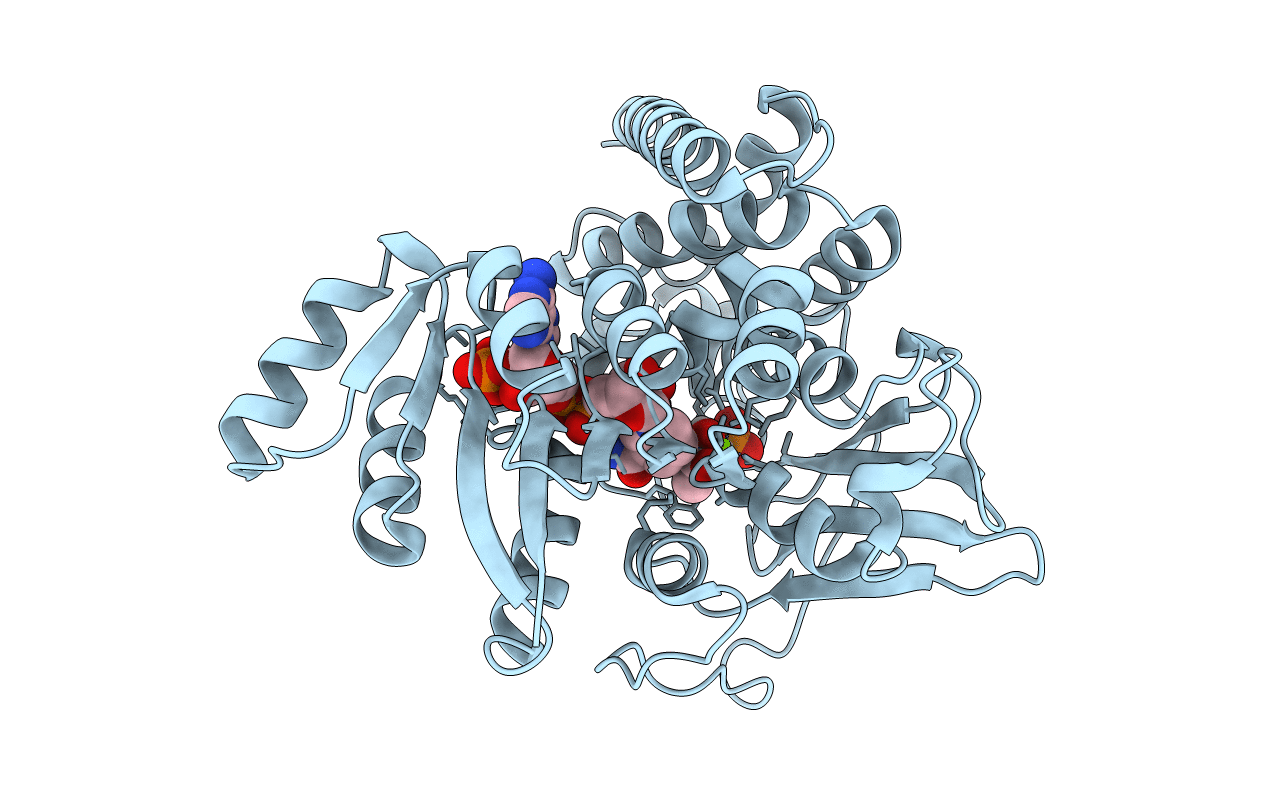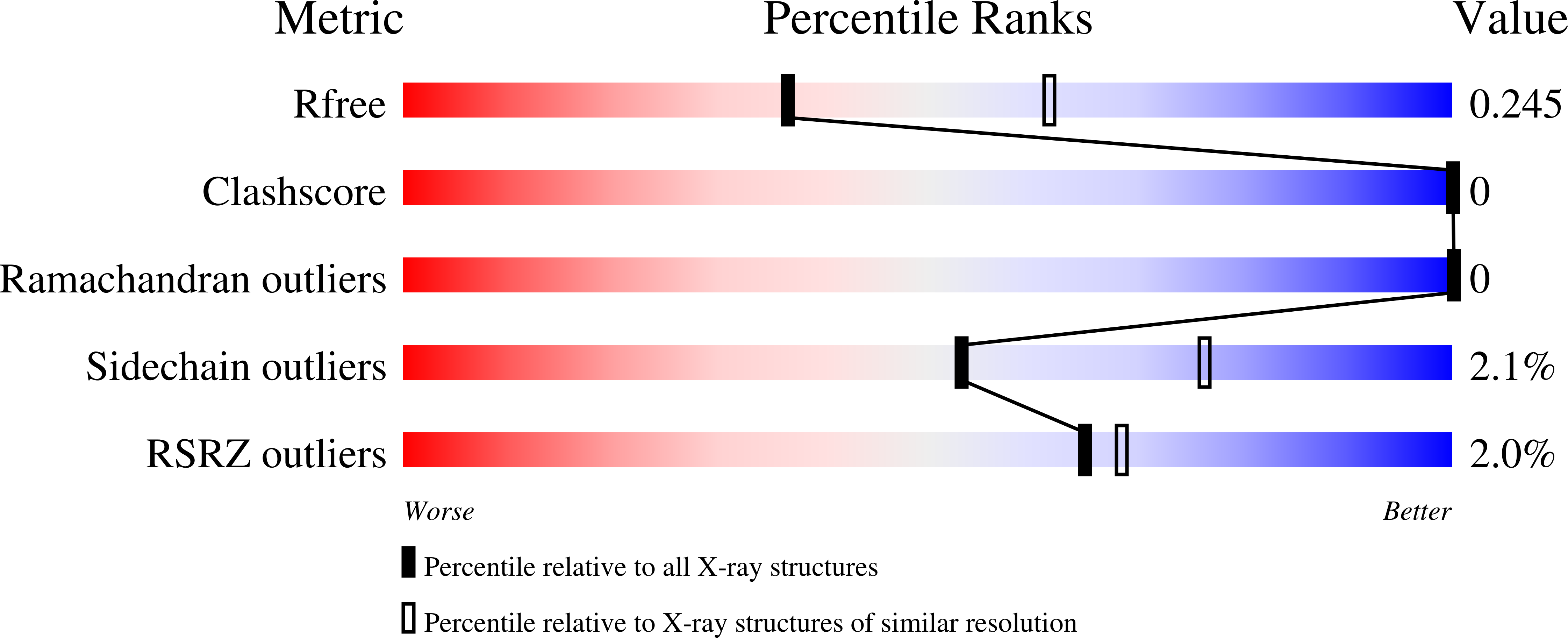
Deposition Date
2021-08-28
Release Date
2021-11-03
Last Version Date
2023-10-18
Entry Detail
PDB ID:
7S04
Keywords:
Title:
1-deoxy-D-xylulose 5-phosphate reductoisomerase (IspC) from Acinetobacter baumannii in complex with FR900098, NADPH, and a magnesium ion
Biological Source:
Source Organism:
Acinetobacter baumannii (Taxon ID: 470)
Host Organism:
Method Details:
Experimental Method:
Resolution:
2.52 Å
R-Value Free:
0.24
R-Value Work:
0.22
R-Value Observed:
0.23
Space Group:
P 21 21 2


